26 巻, 2 号
選択された号の論文の14件中1~14を表示しています
- |<
- <
- 1
- >
- >|
Vistas
-
2012 年 26 巻 2 号 p. 135
発行日: 2012年
公開日: 2017/05/11
PDF形式でダウンロード (151K)
認定医-指導医のためのレビュー・オピニオン
-
2012 年 26 巻 2 号 p. 136-146
発行日: 2012年
公開日: 2017/05/11
PDF形式でダウンロード (8313K) -
2012 年 26 巻 2 号 p. 147-161
発行日: 2012年
公開日: 2017/05/11
PDF形式でダウンロード (11083K)
教育総説
-
2012 年 26 巻 2 号 p. 162-169
発行日: 2012年
公開日: 2017/05/11
PDF形式でダウンロード (12128K)
誌上フォーラム
-
2012 年 26 巻 2 号 p. 171-181
発行日: 2012年
公開日: 2017/05/11
PDF形式でダウンロード (5322K)
原著
-
2012 年 26 巻 2 号 p. 182-190
発行日: 2012年
公開日: 2017/05/11
PDF形式でダウンロード (4124K) -
2012 年 26 巻 2 号 p. 191-199
発行日: 2012年
公開日: 2017/05/11
PDF形式でダウンロード (10841K) -
2012 年 26 巻 2 号 p. 200-204
発行日: 2012年
公開日: 2017/05/11
PDF形式でダウンロード (1553K) -
2012 年 26 巻 2 号 p. 205-210
発行日: 2012年
公開日: 2017/05/11
PDF形式でダウンロード (2800K) -
2012 年 26 巻 2 号 p. 211-220
発行日: 2012年
公開日: 2017/05/11
PDF形式でダウンロード (3110K) -
2012 年 26 巻 2 号 p. 221-226
発行日: 2012年
公開日: 2017/05/11
PDF形式でダウンロード (256K)
Technical Note
-
2012 年 26 巻 2 号 p. 227-235
発行日: 2012年
公開日: 2017/05/11
PDF形式でダウンロード (5706K)
Extended Abstract
-
2012 年 26 巻 2 号 p. 236-240
発行日: 2012年
公開日: 2017/05/11
PDF形式でダウンロード (1810K) -
2012 年 26 巻 2 号 p. 241-245
発行日: 2012年
公開日: 2017/05/11
PDF形式でダウンロード (3955K)
- |<
- <
- 1
- >
- >|
